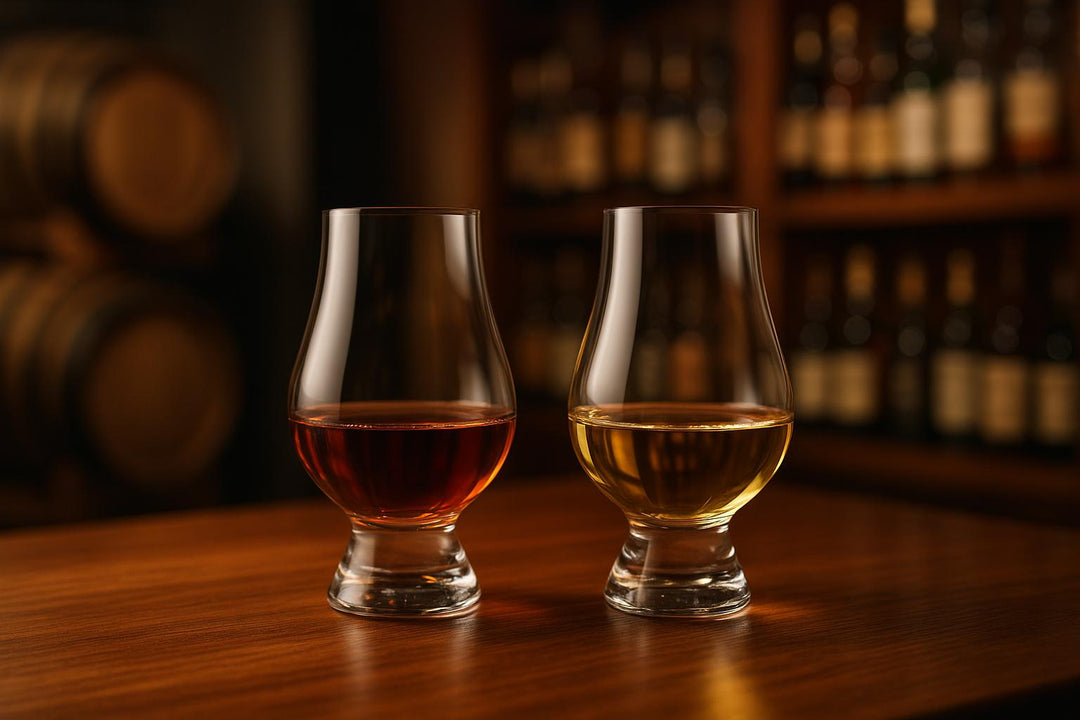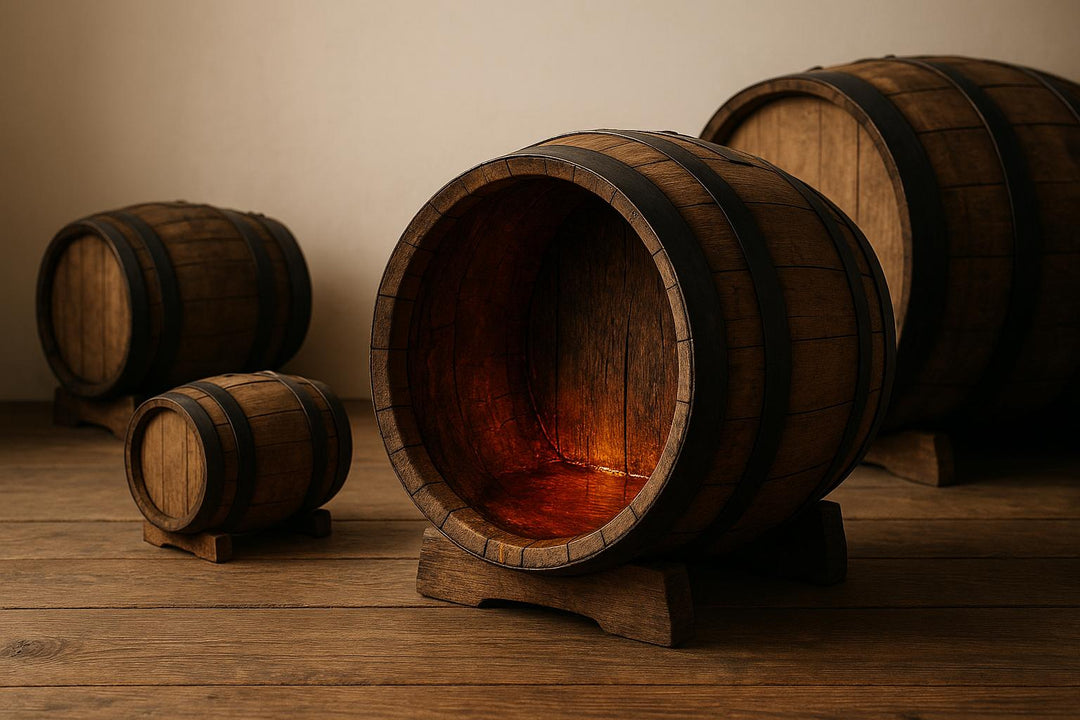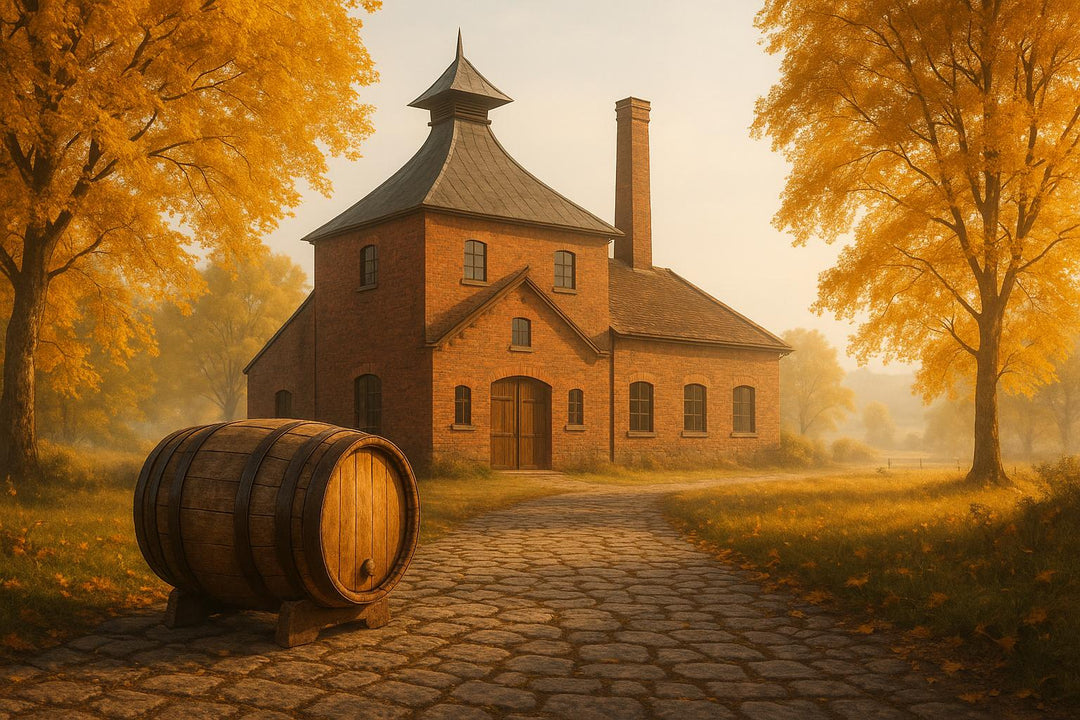Pairing whisky with spicy food is all about finding balance and contrast. The heat from spicy dishes interacts with whisky's flavours in unique ways - whether it's the sweetness of bourbon, the smokiness of peated Scotch, or the smoothness of Irish whisky. Here’s what you need to know:
- Alcohol amplifies spice: High ABV whiskies enhance the heat by dissolving capsaicin, but they also provide a cooling sensation.
- Sweet whiskies balance heat: Bourbon or sweet Scotch tones down spice, making it ideal for dishes like hot chicken or spicy barbecue.
- Smoky whiskies match bold flavours: Peated Scotch pairs well with chilli-heavy or charred dishes like tandoori or Sichuan cuisine.
- Lighter whiskies for creamy curries: Irish whiskies complement coconut-based curries without overpowering delicate spices.
- Experiment with intensity: Match bold whiskies with fiery dishes, or opt for lighter options for milder spice.
Start with small sips, test contrasting or matching flavours, and consider serving whisky slightly chilled. Whether hosting a tasting or enjoying a meal, these tips will help you pair whisky with spicy foods like a pro.
Whisky and Indian food Pairing | Sonal C Holland MW
How Whisky and Spice Work Together
Whisky and spicy food go beyond just taste - they create a unique interaction where their compounds amplify one another. Let’s dive into how this works.
How Alcohol Content Affects Spice
Alcohol plays a big role in how we perceive spice. Higher alcohol by volume (ABV) levels can make the heat from spicy food feel even more intense. Why? Because capsaicin - the compound responsible for the heat in chillies - is alcohol-soluble. When whisky’s alcohol dissolves some of the capsaicin, it enhances the sensation of heat. At the same time, alcohol acts as a flavour carrier, coating your palate and intensifying the experience.
Research shows that spirits with over 13% ABV can magnify the spice in food. Since most whiskies range from 40% to 60% ABV, they naturally heighten the heat. For example, in China, Baijiu - often bottled at around 55% ABV - is a popular match for spicy Sichuan dishes[3].
This interplay between alcohol and spice makes whisky a fascinating partner for fiery foods.
How Whisky Flavours Change Spicy Food
The flavour profile of whisky can transform how you experience spicy dishes. Smoky notes in whisky create a bold contrast to the heat, while its natural sweetness can help balance the spice.
Take sweet whiskies, for example - they pair beautifully with dishes that mix heat and sugar, like gochujang-glazed meats or spicy barbecue. On the other hand, smoky whiskies add depth to grilled or roasted spicy dishes, enhancing the overall complexity of the meal. Whisky doesn’t just complement spicy food - it elevates it, bringing out new dimensions of flavour[2].
Why Strong Whiskies Work with Spice
High-proof whiskies shine when paired with intensely spiced foods. Their boldness matches the heat without being overpowered. Smoky, robust whiskies, in particular, can handle fiery dishes with ease. The high alcohol content creates a cooling, numbing effect that contrasts with the spice, balancing the flavours while adding complexity to the experience.
In contrast, lower-proof whiskies may struggle to hold their own against strong spices. Cask-strength whiskies, however, maintain their character and complement the heat with their bold flavours. For instance, heavily peated Islay Scotch pairs wonderfully with spicy barbecue, while high-rye bourbon is a natural fit for spicy Mexican cuisine[1]. The idea is simple: bold dishes call for equally bold whiskies.
This balance of heat and flavour is what makes whisky such an exciting partner for spicy food.
Choosing the Right Whisky for Spicy Foods
When it comes to pairing whisky with spicy dishes, it’s not just about what you enjoy sipping. It’s about understanding how different whisky styles interact with heat and flavour. The right pairing can either complement the spice or create an intriguing contrast, enhancing your dining experience.
Pairing Rye Whisky with Earthy and Peppery Dishes
Rye whisky, made with at least 51% rye, is celebrated for its naturally spicy character and lighter sweetness compared to bourbon [7]. This makes it a great companion for hearty, earthy dishes like tacos and barbecue. Rye’s bold flavours also stand up well to the fiery heat of Thai cuisine, making it a versatile choice for meals with intense spice [5].
Using Bourbon to Balance Sweet and Hot Flavours
Bourbon, crafted primarily from corn (at least 51%), is known for its caramel sweetness and vanilla undertones, which work wonders in balancing spicy dishes [7]. Whether it’s hot chicken, fried foods, or a spicy Thai curry, bourbon’s rich, sweet notes can temper the heat beautifully. Regional Malts Ambassador Jyri Pylkkänen highlights Glenfiddich 12 as a whisky with a bright freshness that pairs seamlessly with spicy flavours [6].
Cooling Spicy Curries with Irish Whisky
Irish whisky, with its smooth and approachable nature, is a fantastic match for creamy, coconut-based curries [7]. Its subtle profile, free from the smokiness often found in Scotch, allows delicate curry spices to shine. Plus, the whisky’s mild sweetness creates a gentle bridge from spicy courses to dessert [5]. For those who prefer a bolder flavour contrast, consider exploring the smoky depth of peated Scotch.
Matching Bold Spices with Peated Scotch
Peated Scotch whisky, known for its smoky, earthy character derived from peat [8], pairs dramatically with intensely spiced dishes. Its robust profile complements chilli-heavy meals, smoky barbecues, and charred tandoori dishes [7]. The smoky notes echo the charred flavours of these dishes, creating a harmonious match [5]. Jyri Pylkkänen also shares an example, pairing The Balvenie French Oak 16 Year Old with chicken rice. He explains that the spiciness from the French oak perfectly complements the ginger and chilli in the dish [6]. When pairing peated Scotch, it’s important to match the whisky’s intensity with the spice level of the food - boldly spiced meals call for heavily peated expressions, while more subtle dishes pair better with milder options.
sbb-itb-128d6c1
Step-by-Step Guide to Balancing Whisky and Heat
Pairing whisky with spicy food can be a delightful challenge, but it’s all about finding the right balance. The Diageo Bar Academy highlights that "the core principle of pairing food is to create balance while using complementary flavours" [9]. Here’s a simple guide to help you master this art.
Start with Small Sips
Begin with small sips of whisky before diving into your spicy dish. This step allows you to test how the whisky interacts with the heat [11].
First, taste the whisky neat to pinpoint its primary notes - whether they lean sweet, smoky, fruity, or spicy. Then, take a bite of your dish and follow it with a sip of whisky. Pay attention to how the flavours and heat combine. If the pairing feels overpowering, try a whisky with a different profile to create a better balance [1].
Once you’ve assessed the basics, consider contrasting or matching flavours to refine the pairing.
Use Opposite Pairings for Balance
Contrasting flavours can help tone down intensity. Whiskies with sweet or fruity notes are particularly effective at softening sharp heat, creating a harmonious experience. This method works especially well with dishes that have creamy textures, as the sweetness can mellow the spice without overwhelming the palate [10][12].
Try Similar Pairings for Bold Results
If you prefer a bolder experience, matching similar flavour profiles can lead to dramatic combinations. Pairing intense whiskies with equally intense dishes can create a layered, adventurous tasting experience. Experimenting with different whisky profiles is key to uncovering unique and exciting pairings [10][1].
Consider Whisky Texture and Serving Temperature
The texture and temperature of your whisky can significantly influence the overall pairing. Creamy whiskies, for instance, pair beautifully with dishes that share a smooth texture, enhancing the richness of both [10].
Temperature also plays a big role. Serving whisky slightly chilled can reduce the alcohol burn, making it easier to enjoy with spicy food [13]. Additionally, the contrast between a chilled whisky and a hot dish can create a refreshing interplay of sensations. This cooling effect not only cleanses the palate but also highlights the whisky’s subtler flavours [13].
Tips for Hosting Whisky Tasting Events with Spicy Foods
Once you've mastered pairing whisky with spicy dishes, the next step is creating an event where both shine. Hosting a whisky and spicy food tasting requires thoughtful planning to balance flavours and enhance the experience for your guests.
Structure the Tasting from Mild to Bold
The order in which you present whiskies and dishes can make or break your event. Begin with lighter whiskies and gentler spices to ease your guests into the experience without overwhelming their palates [15]. For instance, you might start with a mellow Irish whisky paired with mildly spiced appetisers, move on to bourbon with dishes that bring medium heat, and finish with a bold, peated Scotch matched with the spiciest fare [16].
Save intense, smoky whiskies for the end of the tasting. These robust flavours can overpower the palate if introduced too early [15]. Offering a selection of around 5 to 8 whiskies strikes a good balance between variety and manageability [16]. To make it easier for your guests, display pairings clearly, matching each whisky style with its ideal dish [14].
Provide Palate Cleansers Between Pairings
Palate cleansers are a must to ensure each pairing is appreciated on its own. Without them, lingering flavours can muddle the experience and detract from the enjoyment of subsequent combinations [20].
Simple options like plain crackers, water, or unsalted almonds work well to neutralise the palate between tastings [17]. For dishes with a fiery kick, milk or yogurt can be particularly effective. The fats and proteins in these dairy products help neutralise capsaicin, the compound that creates the sensation of heat [18].
"The only thing that lifts and carries away the chocolate/fat from your tongue and mouth is hot water." – Geoseph [19]
You can also offer refreshing options like mint, parsley, or cilantro to reset the palate [18]. Save sweets and desserts for the end, as their sweetness can interfere with the tasting progression [14]. If you include chocolate, serve it with hot water instead of cold; this helps melt residues and enhances the flavours [19].
Use Whisky Tasting Packs for Variety
Curated whisky tasting packs are a great way to simplify selection and ensure variety at your event. These packs feature pre-selected whiskies that showcase different styles and regions, making it easier to experiment with pairings and discover combinations that complement spicy dishes [1].
The Really Good Whisky Company offers tasting packs that are particularly well-suited for events like these. Their selections cover a range of profiles, from gentle introductory whiskies to bold, complex options for the final rounds of your tasting.
"Pair the flavour of the food with the profile of whisky by either finding commonality or by creating interesting contrasts." – Sam Smith, Master of Malt [1]
Using tasting packs also helps streamline the experience for your guests, providing just enough variety without overwhelming them. This approach accommodates different preferences and spice tolerances, ensuring everyone can enjoy the event.
Finally, pay attention to the environment. Choose a quiet space free from distracting smells that could interfere with whisky aromas [16]. Good lighting is also essential, allowing guests to fully appreciate the appearance of each whisky [16]. These small details can make a big difference in how your event is enjoyed.
Key Points to Remember
Here’s what you need to know to master whisky and spice pairings:
- Balance is everything: Milder whiskies pair best with lighter spices, while bolder whiskies stand up to rich, spicy dishes. Interestingly, whiskies with higher alcohol content can even help tone down the heat of a dish [1] [10].
- Flavour strategy matters: You can choose to either match similar flavours – like a spicy rye with a peppery dish – or create contrast, such as pairing a smooth Irish whisky with a fiery curry [10].
- Single malt vs. blended whiskies: Single malts bring complex, rich flavours that enhance spicy dishes, while blended whiskies offer a smoother, more balanced profile that complements heat without overpowering delicate spices [1]. Each type has its strengths depending on the spice profile of your dish.
- Watch out for overpowering ingredients: Strong flavours like garlic can mask the whisky’s subtle notes [4]. The goal is harmony, where both the whisky and the dish enhance each other rather than compete.
- Experimentation leads to discovery: Start with classic pairings – bourbon with sweet and spicy dishes or peated Scotch with bold spices – then branch out. Everyone’s palate is unique, so trust your taste buds to find combinations that excite you.
Whether you’re exploring The Really Good Whisky Company’s range or working with what you already have, take the time to experiment. You’ll uncover pairings that elevate both the whisky and the dish to new heights.
FAQs
How does whisky's alcohol content affect the spiciness of food?
Whisky's alcohol content has a way of turning up the heat when paired with spicy food. The higher the alcohol percentage, the more it intensifies the spice, making it feel hotter and causing the fiery sensation to stick around longer on your palate. If you're after a gentler experience, opt for whiskies with lower alcohol levels or those that bring sweet, creamy, or fruity flavours to the table. Trying out various styles can lead you to the combination that suits your taste buds best.
What are some great whisky and spicy food pairings that balance flavour and heat?
Pairing whisky with spicy foods is all about striking a balance between the whisky's flavours and the dish's heat. Cask strength whiskies are a great match for bold, spicy curries, as their intense character stands up to the powerful spices. For lighter fare, like spicy seafood, a delicate single malt works well, letting its subtle notes complement the dish without overpowering it. And if fiery chicken wings are on the menu, a rich and smoky whisky can add a layer of depth, offering a satisfying contrast to the heat. The best part? Trying different combinations to discover what works for your taste - so don’t hesitate to experiment!
Why is it helpful to pair whisky with spicy food in a progression from milder to bolder flavours?
When pairing whisky with food, starting with lighter, gentler whiskies and then progressing to richer, more intense ones is a smart move. This gradual approach gives your palate time to adapt to the heat and spice of the dishes, making sure the flavours don’t feel overpowering.
Matching the whisky’s strength to the spice level of the dish creates a smoother, more balanced experience. It also brings out the delicate nuances in both the whisky and the food, making the pairing even more enjoyable.






Leave a comment